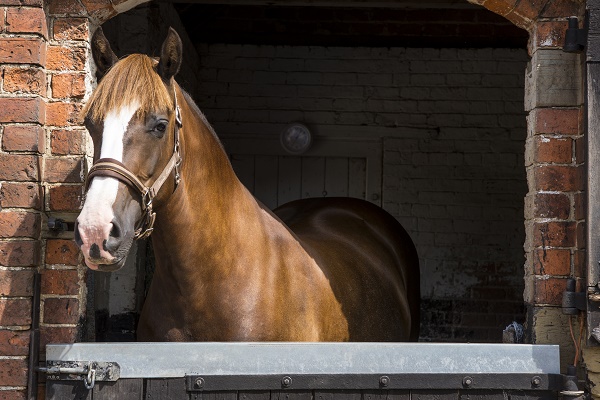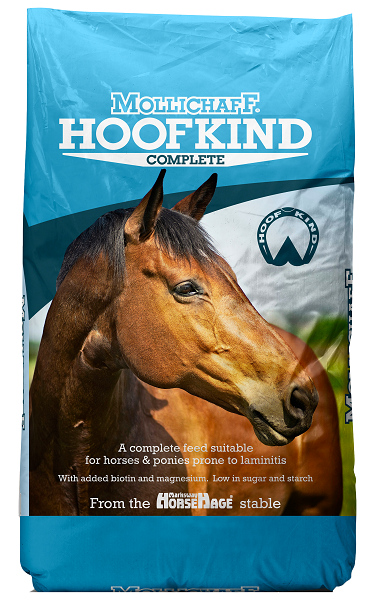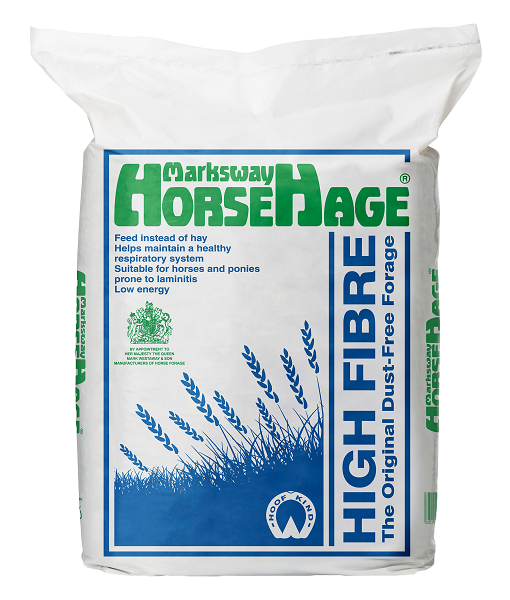Posted: 5th May 2021 | Back to news feed

Summer can be a risk for horses and ponies prone to laminitis as the new grass contains high levels of soluble sugars and non-structural carbohydrates (NSCs) and this high sugar content can be one of several different triggers for laminitis

Many people have the misconception that horses and ponies suffering from laminitis should be fed poor quality hay alone or, worse still, starved of food for long periods of time. Either of these management styles can easily lead to many other serious health issues on top of the existing laminitis. The digestive system of the horse is designed to process small amounts of feed at very regular intervals, hence the horse is known as a “trickle feeder”. This does not change when a horse is diagnosed as suffering from laminitis. Laminitic horses, or those who have been identified as being at risk, require carefully controlled diets that are low in starch and sugar but contain a high level of fibre. They require a balanced diet that reduces their calorific intake whilst continuing to meet all their daily nutritional requirements. This can often be problematic for horse owners when faced with choosing a suitable diet that meets both of these requirements.
You should choose forage that has a lower sugar content than hay, such as High Fibre HorseHage, and, ideally, a complete feed, low in starch and sugar that is suitable for horses and ponies prone to laminitis such as Mollichaff HoofKind Complete
The Lighter Diet has been specially devised by HorseHage to supply all the nutrient and fibre requirements of those prone to laminitis, without the need to feed lots of different products which can be expensive and confusing. The diet also allows sufficient quantities to be fed, ensuring that the horse is not left for extensive periods of time without food.
It consists of Mollichaff HoofKind Complete, a complete feed in one bag, designed to provide the nutritional support of equines prone to laminitis, to be fed alongside High Fibre HorseHage. HorseHage High Fibre is a dust-free bagged forage suitable for those prone to laminitis. These products are all high in fibre and essential nutrients, but are very low in starch and sugar and carry the HoofKind symbol on the bag to indicate their suitability.
Mollichaff HoofKind Complete is a highly palatable mix containing a balanced blend of oat straw, alfalfa, fibre pellets, soya oil, biotin, vitamins, minerals, trace elements and antioxidants and does not contain any cereals. It is low in protein and calories, and provides limited, controlled energy from high quality, digestible fibre and oil-based ingredients, making it an excellent feed for fizzy horses and good doers as well as those prone to laminitis. The high levels of fibre and low levels of starch, sugar and energy, allow it to be fed in surprisingly generous quantities. This means that the daily amount can easily be split into several feeds. Containing a broad spectrum vitamin and mineral supplement, with added biotin, and when fed at the recommended levels to horses at rest or in light work, Mollichaff HoofKind Complete needs no further supplementation other than good quality forage such as HorseHage. It is essential that Mollichaff HoofKind Complete is fed at the recommended levels to ensure that the vitamin and mineral requirements are being met and that the biotin level is sufficient.

Mollichaff HoofKind Complete contains therapeutic levels of biotin. Independent scientific studies have found that supplementing an average horse’s diet with 15mg of biotin per day can greatly increase both the growth rate and the hardness of the hoof. Mollichaff HoofKind Complete has been specifically formulated to ensure that these levels are met. For an average 500kg horse, feeding the required 2.5kg per day will provide the required 15mg of biotin.
Mollichaff HoofKind Complete also contains added magnesium, which is often deficient in UK soils and is an important factor in the nutritional support of many metabolic processes in the horse.
High Fibre HorseHage is ideal to be fed to those prone to laminitis, due to its high fibre content and low energy and starch levels. It contains a typical sugar level of around 5%, which is considerably lower than a typical hay sample which can contain as much as 10%. This low sugar level is due to the fermentation process that occurs within a bag of HorseHage when it is made. As hay does not undergo any fermentation and is simply cut and dried, the sugar level remains higher than in HorseHage.

HorseHage is dust- free and helps reduce the risk of respiratory issues occurring or alleviate any pre-existing conditions. As laminitics often have to be stabled for long periods of time, they are often subjected to higher levels of spores that can be inhaled or ingested, especially when being fed poor quality or old hay. Feeding HorseHage helps to reduce these levels, whilst meeting their specific nutrient requirements.
For further information on feeding your horse, pony or donkey, or for a free Mollichaff sample please call the HorseHage & Mollichaff Helpline on 01803 527274 or visit www.horsehage.co.uk
The Equestrian Index newsfeed is compiled from articles submitted by advertising members and expresses the opinions of those members. Watsons Directories Ltd shall not be held liable for any inaccuracies or mis-statements therein.
